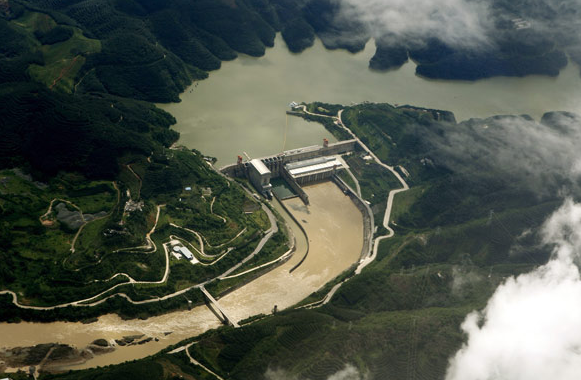China releases water from dam to alleviate SE Asia drought
 0 Comment(s)
0 Comment(s) Print
Print E-mail China Daily, March 16, 2016
E-mail China Daily, March 16, 2016
|
|
|
The Jinghong Hydropower Station will increase water discharges to ease effects of a regional drought. [Photo by Yang Zheng/China Daily] |
A southwest China hydropower station has increased water discharges to up to 2,190 cubic meters per second on a trans-boundary river, in order to provide emergency water supply to Vietnam and other countries in the drought-afflicted Southeast Asian region, Chen Lei, Minister of Water Resources said on Wednesday.
The Jinghong hydropower station in Southwest China's Yunnan province will increase its water discharge on the Lancang-Mekong River through April 10. It will benefit Cambodia, Laos, Myanmar, Thailand and Vietnam, said Chen.
The Mekong River, whose upper part is known in China as the Lancang River, is an important water source for the five countries on the Indochinese Peninsula-Laos, Myanmar, Thailand, Cambodia and Vietnam.
Due to the prolonged effects of El Nino conditions which started taking a toll last year, the Mekong Delta in southern Vietnam is going through the worst drought in nearly 100 years, and large areas of paddy fields will likely be damaged, reported Vietnam news portal Thanh Nien News in February.
According to Vietnamese media, some 140,000 ha of rice in the Mekong Delta has been damaged by the drought with around 600,000 people facing drinking water shortages.
China and countries along the river on the Indochinese Peninsula are "friendly neighbors", and they should help each other to cope with difficulties, said Foreign Ministry spokesman Lu Kang at a news conference in Beijing on Tuesday, referring to the drought that countries along the river have faced since the end of last year.
Reports quoted the Foreign Ministry of Vietnam as saying the country, which is in the lower reaches of the Mekong River, has requested that China increase water discharges by the Jinghong Hydropower Station to help ease the drought.
Lu said China has decided to "overcome its own difficulties" and to provide the emergency water supply to benefit the five countries.






